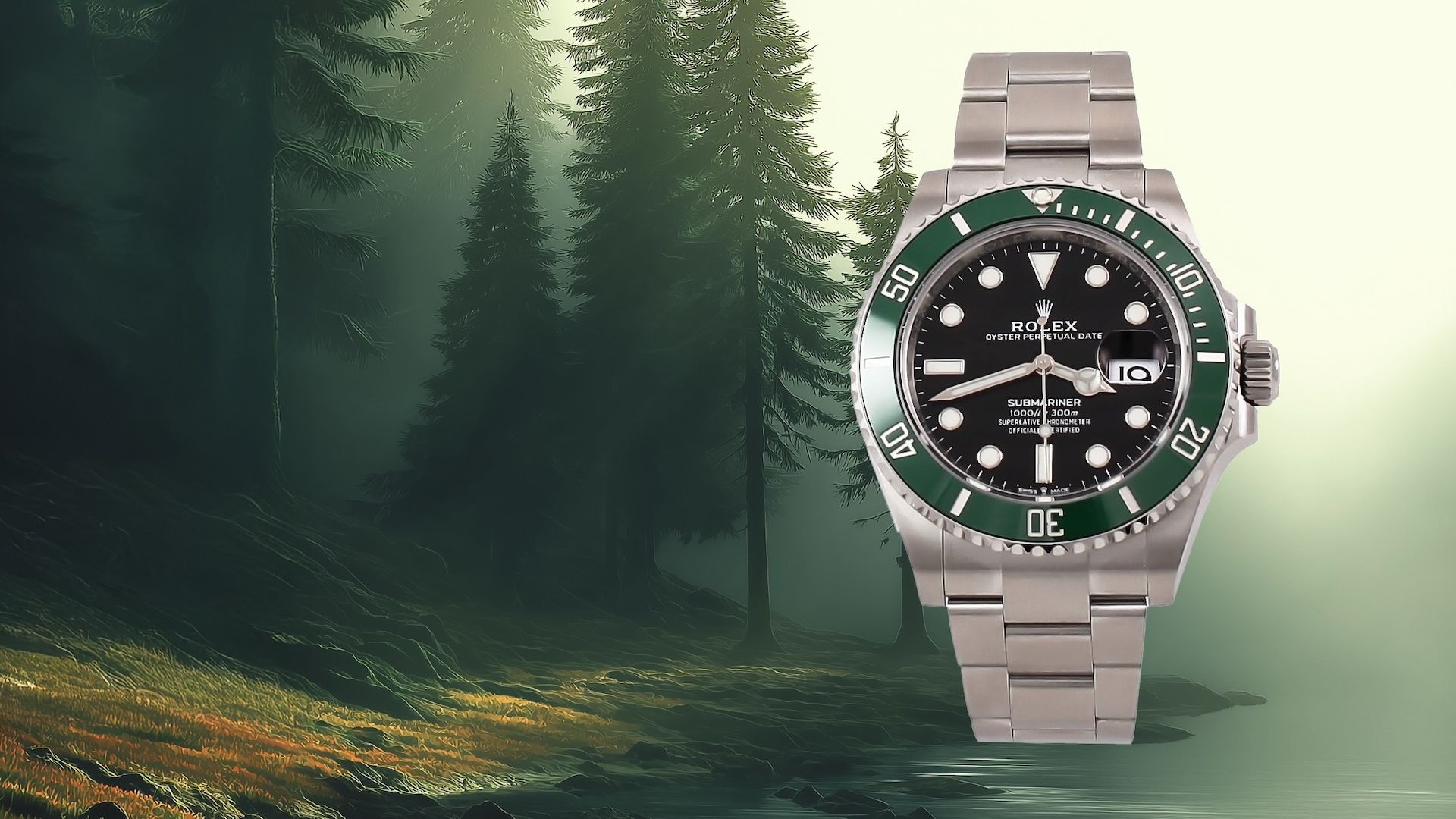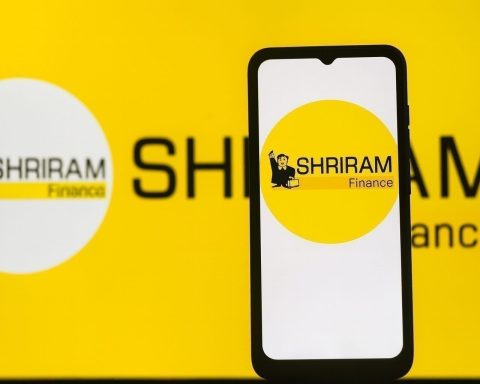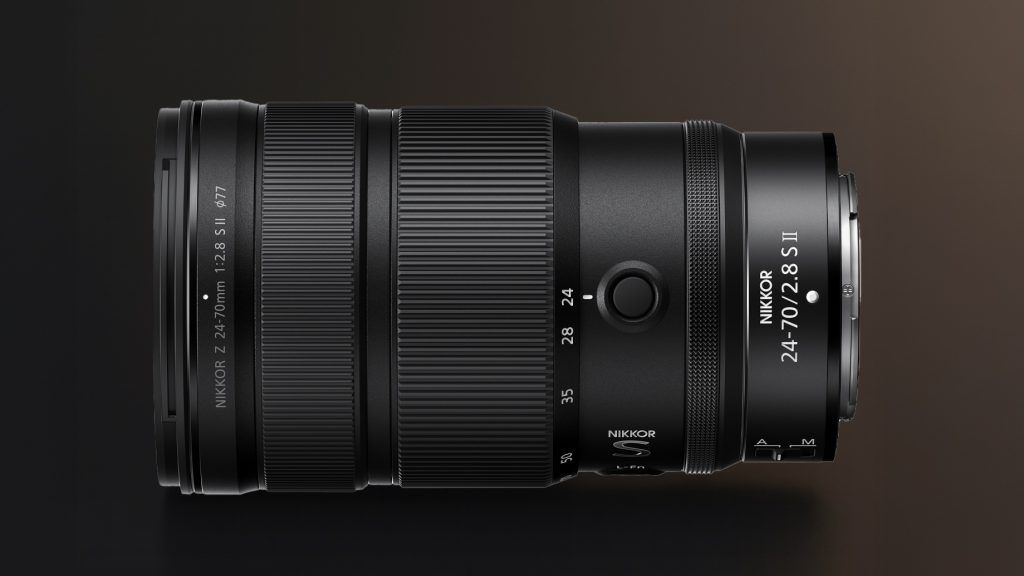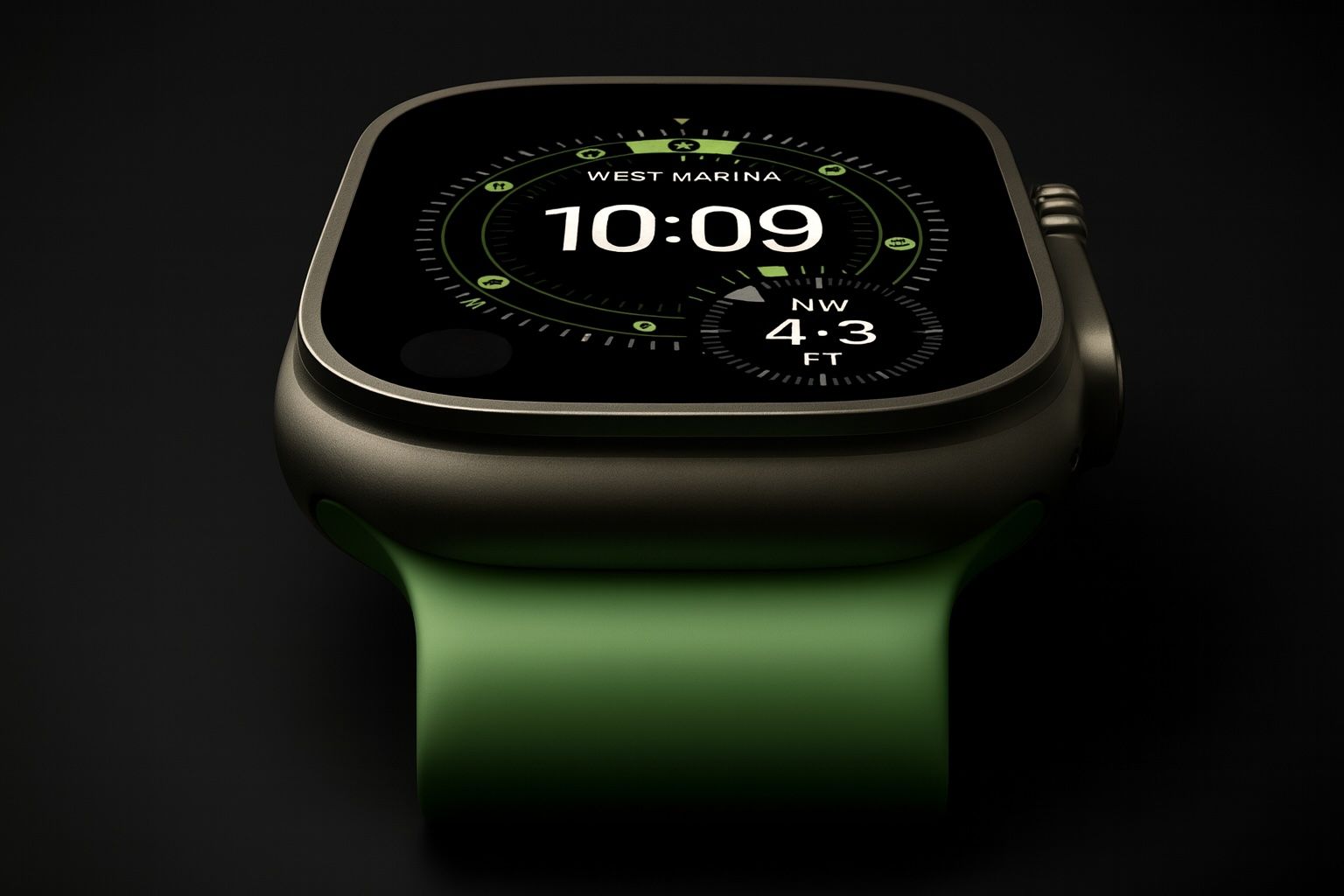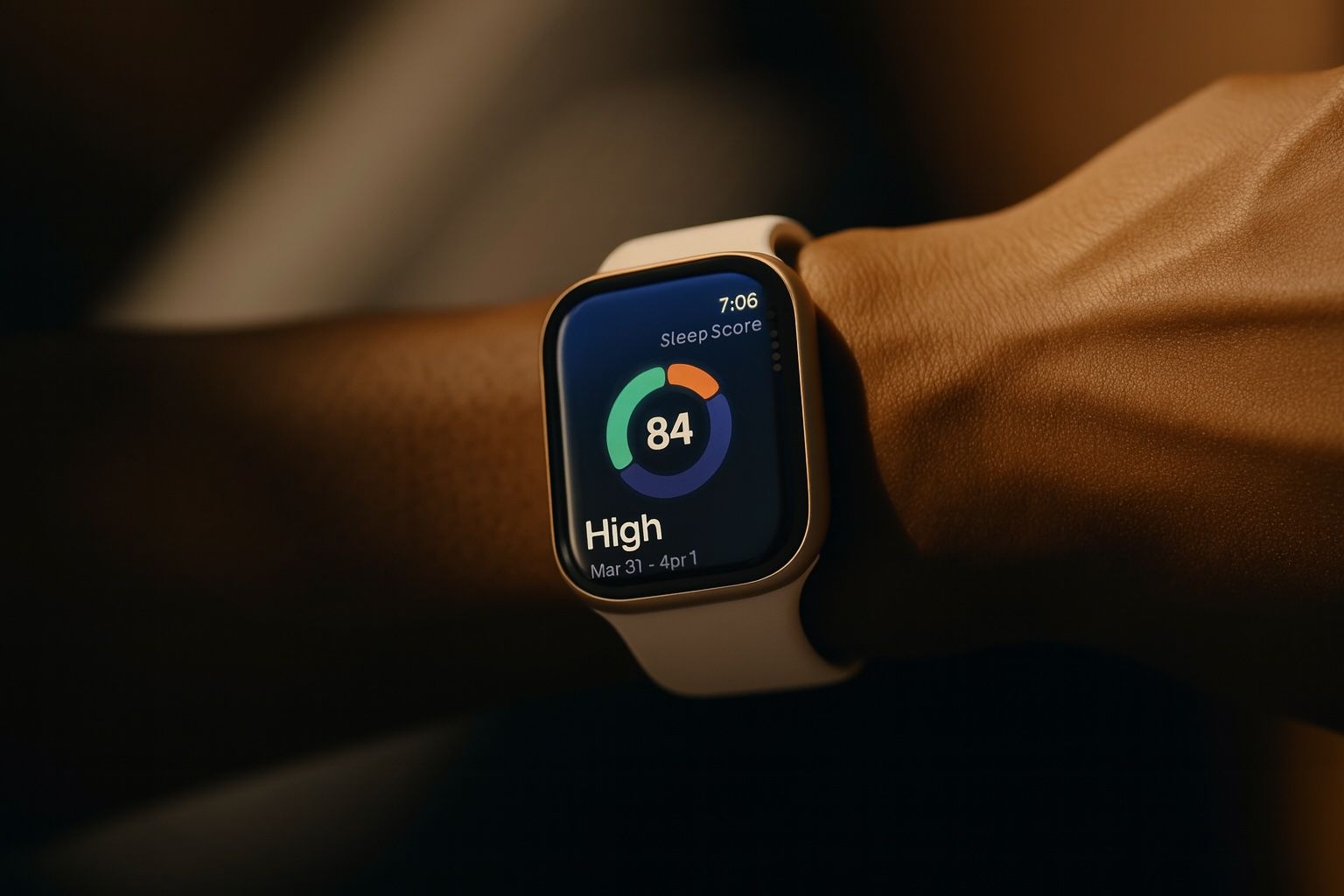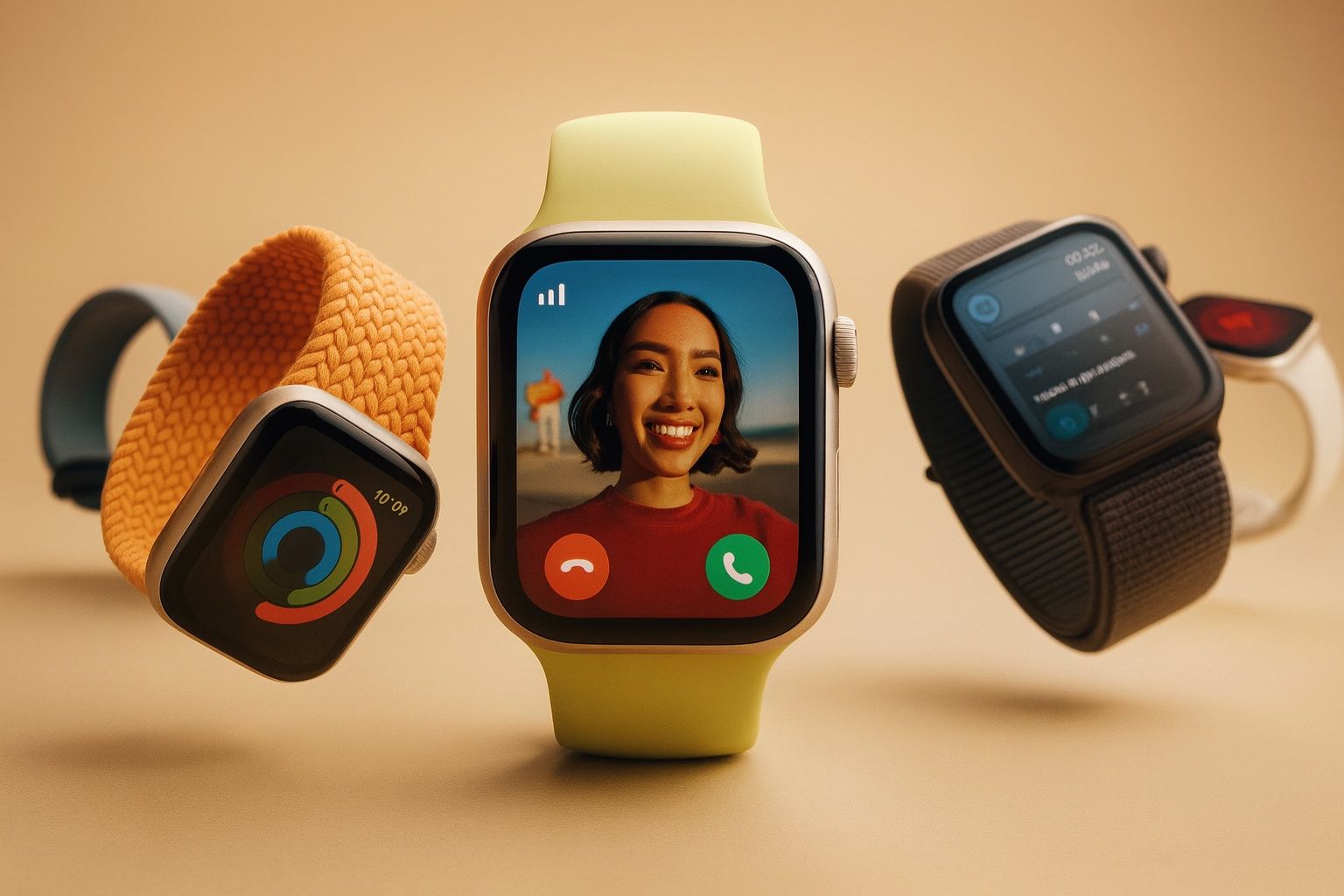- Swiss exports reached a record CHF 26.7 billion in 2023.
- The Big Four—Rolex, Patek Philippe, Audemars Piguet, and Richard Mille—account for nearly 44% of Swiss watch market value.
- Rolex became the first Swiss brand to exceed CHF 10 billion in annual revenue and sold about 1.24 million watches in 2023, roughly 30% of the market.
- Rolex unveiled its first brand-new collection in over a decade in 2025.
- The Deloitte Swiss Watch Industry Study predicted the future of the watch industry is female.
- In 2025, 85% of women feel there are too many gender-specific watch models marketed to them, while 26% prefer gender-neutral or men’s models.
- Popular women’s luxury watches in 2025 include the Rolex Datejust in 31mm midsize and 28mm, the Rolex Day-Date in smaller sizes, Cartier Tank, Cartier Ballon Bleu, Chopard Happy Sport, and Piaget Limelight Gala.
- Smartwatches are now ubiquitous, with about 455 million users worldwide, roughly 21–23% adult adoption, and Apple Watch accounting for about 21% of the market (Samsung about 11% and Huawei about 14%).
- In fashion watches, brands like Fossil, Michael Kors, Hugo Boss, Emporio Armani, Diesel, and MVMT offer accessible designs, while Daniel Wellington broadened its lineup after diversifying from its earlier minimalism.
- In the affordable segment, watches under CHF 200 represented 83% of the increase in units sold in 2023.
Introduction: A New Golden Age of Watches
Watches are back in vogue in 2025, bridging the gap between cutting-edge technology and timeless craftsmanship. From Swiss luxury timepieces commanding waitlists to sleek smartwatches dominating wrists in Silicon Valley, the global watch market is booming with choices for every style and budget. Men and women alike are embracing watches not just as timekeepers, but as fashion statements, status symbols, and even tech companions. “We’re seeing more and more women investing in luxury watches as essential elements of their wardrobes,” says Eugene Tutunikov, CEO of SwissWatchExpo [1]. At the same time, smartwatches have gone mainstream, with over half of surveyed women now wearing a smartwatch (exclusively or alternating with a traditional watch) – a share that nearly doubled since 2020 [2]. In this report, we’ll explore 2025’s most popular watches across four key categories – luxury, fashion, smartwatches, and affordable – with separate insights into men’s and women’s trends. Along the way we’ll highlight expert opinions, recent industry news, and regional preferences that are shaping the watch world. Time to dive in!
Luxury Watches in 2025: Timeless Prestige and Modern Trends
Luxury watches remain the ultimate status symbols in 2025, revered for their heritage, craftsmanship, and investment value. The high-end watch industry is hotter than ever, posting record sales in 2023 and continuing strong into 2025 [3] [4]. Swiss exports reached an all-time high of CHF 26.7 billion in 2023 [5], and even as growth cools slightly, demand for iconic luxury models stays robust. In fact, analysts note “the polarization of the market is stronger than ever” – the top few brands are claiming an increasing share of sales [6]. Privately-owned marques dubbed the “Big Four” (Rolex, Patek Philippe, Audemars Piguet, Richard Mille) now account for nearly 44% of the Swiss watch market by value [7]. Rolex, in particular, is in a league of its own – it became the first Swiss brand to exceed CHF 10 billion in annual revenue, with an estimated 1.24 million watches sold in 2023 (about 30% of the market) [8] [9]. Desirability is near an all-time high, as one industry report noted, evidenced by lengthy waitlists for popular Rolex and Patek models even as once sky-high secondhand premiums have begun to normalize [10]. In 2025, luxury watchmakers are carefully balancing tradition with fresh innovation – from Rolex unveiling its first brand-new collection in over a decade [11] to independent haute horology houses pushing complications to new extremes. Below, we break down the prevailing luxury watch trends for men and women:
Men’s Luxury Watch Trends in 2025
Among men, sports luxury watches continue to reign supreme. Stainless steel sport models with heritage pedigree – think the Rolex Submariner, GMT-Master II, Daytona, the Audemars Piguet Royal Oak, or Patek Philippe Nautilus – are as coveted as ever, often with multi-year waitlists at boutiques. Rolex’s dominance is indisputable: the brand strengthened its retail market share to ~30% [12], even reportedly upping production of its Submariner to slightly ease shortages [13]. Other top sellers for men include Omega’s Speedmaster Moonwatch and Seamaster Diver 300M, Cartier’s Santos sports watch, and newer hits like the Tudor Black Bay (though Tudor’s sales growth has slowed [14]). Sporty chronographs and dive watches align with men’s ongoing preference for masculine, versatile pieces that pair with both office attire and weekend wear.
At the same time, there’s a noticeable return of precious metals in men’s watches. After a decade dominated by steel, yellow gold and two-tone models are making a comeback as bold style statements. Watch trend reports confirm a shift toward solid gold’s timeless elegance in 2025, with buyers embracing classic yellow and rose gold options beyond just steel or bi-metal [15]. Indeed, Rolex’s gold Day-Date (“President”) and gold Submariner models are highly sought by men looking to showcase success. Even titanium is trending as a high-tech luxury material – prized for its lightweight toughness, it has been reaffirmed “as a material of the future” in fine watchmaking [16] (seen in pieces like the titanium Audemars Piguet Royal Oak or Omega’s Seamaster Ultra Deep). Men are also increasingly intrigued by creative dials and colors. Vibrant dial hues are in vogue – from rich greens and blues that have become modern classics, to the surprising rise of pink dials adding a daring pop of color to men’s collections [17]. This follows the “salmon dial” trend of recent years and reflects a broader move towards more expressive, individualized watches for men.
Despite these evolving tastes, one thing is constant: men remain the core enthusiasts driving the mechanical watch renaissance. Luxury chronographs, GMTs, and other complications are objects of fascination, and vintage-inspired reissues continue to resonate. For example, brands are reissuing heritage models (Breitling’s retro pilots, Omega’s 1957 Trilogy, etc.) and finding eager male audiences. Collectors swap tips on forums and chase limited editions, fueling a vibrant secondary market. In short, the modern man’s luxury watch is both a personal style signifier and a piece of a storied legacy, explaining why demand stays strong even amid high prices. As Morgan Stanley’s report summed up, “desirability is near an all time high” for top luxury watches [18] – in 2025 men are as passionate as ever about securing that grail timepiece on their wrist.
Women’s Luxury Watch Trends in 2025
Women’s presence in the luxury watch arena has never been greater. Long viewed as an underserved segment by high-end brands, female consumers are now a driving force in luxury watch growth [19]. The Deloitte Swiss Watch Industry Study went so far as to predict “the future of the watch industry is female.” [20] In practice, more women are buying prestigious watches for themselves as symbols of accomplishment, style, and even investment – not merely receiving them as gifts. This shift is evident from the boardroom to social media: women collectors and influencers are voicing what they want, and the industry is responding with expanded offerings. As Tutunikov observes, for many women a fine watch has become “an expression of her unique style, her achievements, and her personal narrative,” not just a piece of jewelry [21] [22].
The most popular luxury watches for women in 2025 blend elegance with everyday versatility. Rolex is a top choice – models like the Rolex Datejust (especially midsize 31mm and classic 28mm) and the Rolex Day-Date (“President”) in smaller case sizes are perennial favorites, prized for their timeless design and prestige. These Rolex pieces strike a balance of feminine refinement and robust functionality (waterproof Oyster cases, automatic movements), making them suitable for both business and casual wear [23] [24]. Another staple is Cartier, whose watches like the Cartier Tank and Ballon Bleu epitomize Parisian chic. The Cartier Tank, for instance, is celebrated as a “timeless elegance…designed for the discerning woman who values sophistication” [25] [26]. Its petite rectangular form and Roman numeral dial have made it a go-to dress watch for style-conscious women. Beyond these, ladies are embracing pavé diamond bezel variants, mother-of-pearl dials, and other luxurious touches that allow a watch to double as jewelry. The Chopard Happy Sport (with free-floating diamonds on the dial) or Piaget Limelight Gala are examples of high-glamour watches that remain popular for women who do want a more overtly bejeweled look.
However, a major trend in recent years is that many women eschew traditionally “ladies only” watch designs. Surveys found 85% of women feel there are too many gender-specific watch models marketed to them that they don’t actually want to wear [27]. Instead, female buyers are increasingly interested in watches historically marketed to men or unisex audiences. In fact, “women wearing large watches has been a trend for a few years now,” observes Vogue, with many opting for chunkier 38–40mm sports watches over delicate mini sizes [28]. It’s now common to see women proudly wearing a Rolex Submariner or GMT, an Omega Speedmaster, or even heftier pieces like Panerai Luminor and Audemars Piguet Royal Oak Offshore. This “borrowed from the boys” style is considered bold and fashionable. Celebrities have led the way: for example, style icons like Rihanna and Charlize Theron have been spotted rocking traditionally masculine watches. The appeal is both aesthetic (a larger watch makes a statement and can complement today’s trends in women’s power dressing and streetwear) and technical (many women now want the same intricate mechanical movements and features, not just quartz versions). A study by Watch Femme confirmed that 26% of women now prefer gender-neutral or men’s watch models; in some watch-savvy markets like Hong Kong and Italy, this figure climbs above 40% [29]. Brands have started to take note by featuring more unisex marketing and offering midsize options that can suit a range of wrist sizes.
Of course, there is still a considerable segment of women who appreciate feminine classics. In certain regions – for instance China, France, and the UAE – about 50% of women surveyed actually do favor female-specific watch designs [30], indicating the diversity in preferences. Thus, 28–34mm diamond-accented Cartier, Omega, Jaeger-LeCoultre, or Patek Philippe ladies’ watches remain steady sellers for those wanting a traditional elegant look. But even these are often mechanical and not shy on substance. Notably, more maisons are introducing serious complications for women (moonphases, chronographs, even tourbillons tailored to female collectors), signaling that women deserve the same horological gravitas. And beyond the watches themselves, women are redefining how luxury watches are worn. “Gone are the days when watches are worn solely on wrists. One of 2025’s top trends is wearing timepieces as jewelry and in unexpected ways, like draping them around the neck as pendants or even as cocktail rings,” reports Marie Claire, quoting stylist Wallner [31]. With more women embracing watches, there’s “a surge in creativity around how they’re worn” [32] – from Rihanna famously sporting a $400k Jacob & Co. watch as an anklet to singer Taylor Swift turning a diamond watch into a choker necklace on the red carpet [33]. This blurring of watch and jewelry usage underscores that for women in 2025, a luxury timepiece is a versatile accessory limited only by imagination. Whether they choose a classic ladies’ watch or a repurposed men’s model, women are increasingly asserting their tastes – and the industry is finally listening.
Fashion Watches in 2025: Trendy Timepieces & Designer Style
Not everyone needs a five-figure Swiss watch or a high-tech gadget – there’s a huge market for fashion watches, the stylish (and relatively affordable) timepieces produced by designer brands and high-street labels. These watches prioritize looks and lifestyle branding, often featuring eye-catching designs that coordinate with current fashion trends. In 2025, fashion watches continue to be popular, especially among younger consumers and those who view a watch primarily as a style accessory. However, this segment has been navigating choppy waters: the rise of smartwatches and changing consumer expectations have forced fashion watch makers to adapt. Over the past decade, we saw the explosive ascent of minimalist fashion watches (such as Daniel Wellington’s slim, NATO-strap watches) followed by a cooling off period as that trend matured. Now fashion watch brands are reinventing themselves with new designs, improved quality, and even diversification beyond watches. Let’s examine how men and women are embracing fashion-category watches this year:
Men’s Fashion Watch Trends
For men, fashion watches tend to appeal to those seeking accessible style rather than intricate mechanics. Brands like Fossil, Michael Kors, Hugo Boss, Emporio Armani, Diesel, MVMT and others remain fixtures in malls and online, offering trendy looks typically priced in the low hundreds of dollars. In 2025, many men who buy fashion watches are looking for a versatile daily piece that complements casual and business-casual attire without breaking the bank. Popular styles include minimalist dress watches (clean dials, slim cases, often on leather straps) and modern sport watches with larger cases or chronograph subdials that project a masculine vibe. The minimalist look popularized in the 2010s hasn’t disappeared – you can still find plenty of men opting for a simple 40mm rose gold-toned watch with a white dial and brown strap to match a smart outfit. But the craze for ultra-minimalism (sparked by brands like Daniel Wellington, MVMT, etc.) has tempered. As one industry insider noted, the social media-fueled boom of Daniel Wellington’s minimalist design – which “took off like a rocket in the 2010s” – eventually slowed, prompting the brand to refocus and diversify [34] [35]. Indeed, Daniel Wellington (DW) serves as a case study for men’s fashion watch trends. DW found massive success targeting a “non-typical” watch audience (young people, including a huge female fanbase) and by 2017 was Europe’s fastest-growing company across all categories [36]. For men, DW’s clean-cut Classic and Iconic Link models became common first “nice” watches. While DW’s revenue declined in the late 2010s and it underwent a strategic reset, the brand claims “2023 is our best year in five years” after returning to broader retail channels [37] [38]. They now sell about 1 million watches per year (down from a peak of ~2 million) and have even introduced an automatic mechanical model to appeal to more serious watch fans [39] [40]. This trajectory suggests that men’s fashion watch tastes have evolved – there’s still interest in stylish watches, but today’s consumers also expect value and some authenticity, not just cheap throwaway quartz pieces.
Thus, many men in this segment are gravitating toward watches that combine style with substance. For example, retro-inspired designs are in vogue: brands have rolled out vintage-looking chronographs and dive-style watches that give a nod to classic mid-century pieces, satisfying men who want a fashionable watch with a bit of heritage feel. We also see collaborations between fashion brands and watchmakers (for instance, Fossil partnering with streetwear designers or luxury brands releasing co-branded fashion watches) to create buzz. On the other hand, some men who previously might have bought a fashion watch are now opting for smartwatches or fitness watches as their casual accessory – this is especially true for tech-savvy and sporty individuals who prefer the functionality. The competition from smartwatches has put pressure on the fashion watch category catering to men. In fact, Fossil Group (which produces watches for Fossil, Michael Kors, Armani, etc.) recently announced it is exiting the smartwatch business after struggling to compete in that arena [41]. Instead, they’re refocusing on their core analog watch lines and watch accessories. This indicates that even major fashion watch companies realized they can’t out-tech Apple and Samsung, so they’re doubling down on what they do best: affordable analog fashion watches.
In terms of what’s trending now for men’s style watches: blue and black dials remain popular safe choices, but there’s growing acceptance of bolder colors (a forest green dial or even burgundy can add a fresh twist to an outfit). Larger case sizes (42–45mm) are still offered for those who want an oversized look, though many men are coming back down to mid-size watches (~40mm) for comfort. Metals like gunmetal grey or matte black PVD coatings are used to give fashion watches a modern, edgy aesthetic. On the flip side, a trend toward retro digital watches has even crept into fashion – young men are wearing reissued Casio vintage digital watches or calculator watches as a cool throwback statement, often layering them with streetwear. And when it comes to quality, there’s a bit of an arms race: several microbrand and entry-level traditional brands (e.g. Timex, Seiko) are offering stylish models under $300 with mechanical movements or better materials, directly appealing to fashion watch customers. This has nudged the big fashion labels to ensure their watches feel worth the price. In sum, men’s fashion watches in 2025 are all about striking a balance – providing the design flair that a stylish guy wants, while acknowledging that competition (from smartwatches and value-driven brands) means the watch should offer something beyond just a logo. Those that hit this sweet spot – a handsome design, reliable build, and sub-$500 price – are finding a place on male wrists.
Women’s Fashion Watch Trends
Women have long been a pillar of the fashion watch market – indeed, many fashion-focused brands target female customers heavily, knowing a watch can be as much an accessory as a handbag or pair of shoes. In 2025, women’s fashion watches continue to sell strongly, although like their male-targeted counterparts, they face the dual challenges of smartwatch substitution and changing tastes. Many women today either wear an Apple Watch or no watch at all for daily use (recall that only ~22% of women now exclusively wear a traditional watch [42]). That means fashion watch makers must offer something compelling to entice women to put on an analog watch again. The winning formula seems to be treating watches as fun, stylish jewelry pieces that can elevate an outfit. We see plenty of that in 2025’s trends: from petite gold-tone watches that double as bracelets, to bright-colored statement watches that add a pop to neutral attire, and even unconventional ways of wearing them (as pendants or layered with bangle bracelets).
Designer brands under the Fossil Group umbrella (Michael Kors, Kate Spade, Coach, etc.) and other labels like Guess, Olivia Burton, Swatch, and Marc Jacobs are prominent in women’s fashion watches. Classic feminine looks still dominate: rose gold finishes, mother-of-pearl dials, crystal or diamond accents, and slim profiles are common traits. For example, Michael Kors’ watch line – once the epitome of trendy “it-girl” wrist wear – continues to offer glamorous pieces like the Petite Lexington with a green sunray dial or two-tone pavé bezel [43] [44]. These serve as affordable alternatives to high-jewelry watches, giving the wearer a bit of sparkle. Color is another big theme: women are embracing colorful straps and dials to coordinate with outfits. Brands like Michele and Kate Spade have introduced watches in bold hues (red, pink, Kelly green, etc.), marketed as “fun accessory moments” to liven up one’s look [45] [46]. Even traditionally conservative brands like Longines and Tissot have added pastel or colored dial options in their lower-priced collections to attract fashion-oriented women. A colorful watch can be an “elevated addition to a neutral outfit,” as one style columnist noted [47]. Additionally, watch strap swaps are popular – women enjoy changing straps (metal, leather, fabric) to match different styles, a trend capitalized on by brands offering easy strap change systems and selling a variety of straps as accessories.
One notable trend in women’s fashion watches is a move toward versatility and mixing metals. Instead of strict gold or silver, many designs are mixed-metal (two-tone cases and bracelets), which “makes it easier to coordinate with the rest of your jewelry,” according to fashion advisors [48] [49]. Two-tone watches (steel and rose gold, for example) are quite popular as they pair with both silver and gold jewelry – a practical plus for style-conscious wearers. We also observe a renewed interest in retro styles among women. Vintage-esque touches like rectangular dials (evoking Art Deco cocktail watches), Roman numerals, and mesh bracelets are coming back, often reinterpreted in a modern way. Avanti Jewellers, forecasting 2025 women’s trends, highlighted features like “vintage appeal, rectangular cases, Roman numerals, and two-tone details” as in vogue now [50]. This indicates that younger women, in particular, find charm in pieces that have a hint of nostalgia or classic elegance rather than purely contemporary designs.
Despite the competition from smartwatches, many women still appreciate a beautiful analog watch as a fashion statement for occasions when a chunk of black glass on the wrist (i.e. an Apple Watch) might not fit the aesthetic. For example, pairing a dainty dress with a small gold watch or stacking a watch with bracelets for a boho look are practices alive and well on Instagram and Pinterest in 2025. And the industry has seen that when positioned correctly, women will indeed spend on these pieces: one survey found almost 40% of women are willing to spend $500–$5,000 on a new watch, a proportion that actually grew from the year prior [51]. This suggests a healthy appetite for mid-range watches that serve as style investments. In response, brands like Tissot, Longines, and TAG Heuer (traditional watchmakers at lower price points) have begun actively courting female customers with fashion-forward yet quality models, encroaching on what used to be fashion brands’ turf. For instance, the Tissot PRX 35mm in ice blue or gold tone has become a mini-hit among women who want a trendy ’70s-inspired steel watch that’s also Swiss made (and under $700). The TAG Heuer Aquaracer now comes in a pastel mint-green dial variant around 30mm, clearly aiming at style-minded women.
Finally, as with men, smartwatches are a factor here – but interestingly, some fashion watch brands have started treating the Apple Watch as a fashion platform rather than a competitor. Since Fossil and others have quit making their own smartwatches, they now sell stylish Apple Watch straps and jewelry to help women accessorize their Apple Watches in a fashionable way [52]. So a woman might have an Apple Watch for weekdays (dressed up with a designer strap) and a chic analog fashion watch for evenings out or special events. The net effect is that the fashion watch segment is still kicking and adapting. Women’s fashion watches in 2025 are all about affordable luxury looks – offering trendy design, versatility, and a touch of glamour at prices that make it easy to own a collection to mix and match. As one magazine put it, “the best watches of 2025 are every cool woman’s luxury accessory” – whether worn on the wrist, as a necklace, or even an anklet [53]. This creative, jewelry-like approach is helping keep traditional fashion watches relevant and desirable for the style-conscious female consumer.
Smartwatches in 2025: Tech Meets Timekeeping
In the span of a decade, smartwatches have transformed from novel gadgets into everyday essentials for millions. By 2025, the smartwatch has firmly established itself as the timepiece of choice for the digital generation, profoundly influencing how both men and women interact with their watches. The statistics speak volumes: the global smartwatch user base has surged to around 455 million people [54] [55], and the adoption rate among adults worldwide is roughly 21–23% and climbing [56] [57]. In the U.S., about 1 in 5 adults (21%) now say they regularly wear a smartwatch or fitness tracker [58] – a penetration unimaginable just a few years ago. By raw numbers, Apple is the powerhouse: Apple Watch commands about 21% of the global smartwatch market (making Apple the largest single watch maker by unit volume) [59]. Tech industry analyses indicate Apple likely ships on the order of 30–40 million watches per year, easily outselling the entire Swiss watch industry in unit terms [60] [61]. As Apple CEO Tim Cook famously announced, the Apple Watch is “now the top-selling watch in the world” – not just among smartwatches, but any type of watch [62]. Competitors like Samsung (with ~11% market share) and Huawei (~14%) have significant slices of the pie as well [63], especially in regions where Android devices dominate. There’s also a robust secondary tier of smartwatch makers: Garmin for fitness enthusiasts, Fitbit (Google) for casual health tracking, and niche players focusing on specific sport or lifestyle needs. All of this means that in 2025, smartwatches are ubiquitous on wrists from San Francisco to Shanghai – but the way men vs. women engage with these gadgets does show some subtle differences in preferences and usage.
Men and Smartwatches: Gadgets and Gear
Men were early adopters of smartwatches, often drawn by the allure of tech features and the appeal of a multipurpose device on the wrist. Surveys confirm that globally a slightly higher percentage of men own smartwatches (about 23% of men vs. 21.8% of women as of mid-decade) [64] [65]. One reason is that men, stereotypically at least, can be gadget lovers – “Men are more likely to be early adopters…impressed by technical specifications,” whereas women “give more importance to the value it brings to their lives,” one market study noted [66]. Indeed, many men view the smartwatch as the ultimate gadget: it handles notifications, fitness metrics, music, payments, and more, all in one sleek package.
In 2025, the Apple Watch (especially the latest Series 9 and the rugged Apple Watch Ultra model) is extremely popular among men using iPhones. Its seamless integration into the Apple ecosystem and masculine options like the Ultra’s bulky titanium case or Nike-branded sport editions make it a go-to. For Android-using men, Samsung’s Galaxy Watch 6 and Google’s Pixel Watch are top choices, offering similar capabilities in round watch aesthetics. Men also gravitate toward Garmin’s high-end smartwatches (like the Fenix and Forerunner series) for serious sport and adventure tracking – these devices have robust GPS, long battery life, and a more utilitarian, rugged look that many guys appreciate for outdoors or fitness use. It’s common to see a man swap between a Garmin for weekend hikes and an Apple Watch or mechanical watch for the work week.
The features men care about in smartwatches often include fitness and health metrics (heart rate, steps, gym workout tracking), notifications and quick info (texts, emails, weather, calendar on the wrist), and increasingly, sports and adventure capabilities. The year 2025 sees smartwatches expanding into more hardcore territory – for instance, dive-ready smartwatches, golf swing analyzers, backcountry ski maps on your wrist, etc., which appeal to male hobbyists. Customization is another appealing factor: men can choose digital watch faces that suit their mood, from a classic analog look to a futuristic display, essentially having a collection of watches in one device. Tech-savvy men also enjoy tinkering with apps and integrations, for example using their watch to control smart home devices or as a remote for their phone camera.
One interesting dynamic is how smartwatches have started to replace entry-level traditional watches for many young men. Rather than buying a $300 fashion watch, a lot of teens and 20-something men are going straight to a $300 Apple Watch SE or similar. The value proposition of “it’s a watch, plus so much more” is hard to beat for a generation that prioritizes connectivity. That said, among enthusiasts, some men have started to experience “screen fatigue” – a small backlash where they prefer an analog watch at times to disconnect from digital life. But even those folks often own a smartwatch for workouts or convenience.
From an industry perspective, the male market for smartwatches is huge and still growing. North America and Europe have high adoption, but growth is now booming in Asia and other regions for men too. India, for example, is expected to see smartwatch demand jump by 75% in coming years [67], with a lot of those buyers being young men in urban areas using affordable models by local brands or Huawei. And speaking of affordability – there’s a wide range: while a tech-savvy businessman might wear the $800 Apple Watch Ultra, another man might pick up a $50 Xiaomi or Amazfit smartwatch that covers basic functions. In all cases, the trend is clear: men love the functionality and cool factor of smartwatches. The classic image of a guy with a mechanical watch isn’t gone (as our luxury section shows), but it’s now just as common to see a guy with a glowing OLED watch face checking his heart rate after a meeting. The digital revolution on the wrist is very much a part of men’s lifestyle in 2025.
Women and Smartwatches: Connected Chic and Wellness
For women, smartwatches have proven to be immensely popular as well, albeit sometimes for slightly different reasons. A striking finding of the Deloitte 2024 watch report was that over 50% of women now wear a smartwatch (either exclusively or alternating with a traditional watch), whereas the share of women sticking only to traditional watches has plunged to just 22% [68]. This represents a major shift over the past few years – essentially, a majority of women who wear something on their wrist have embraced smart wearables. What’s driving this? Largely the health and convenience benefits that smartwatches offer, which resonate strongly with female consumers. Many women see the Apple Watch or Fitbit as a wellness tool, tracking their activity, menstrual cycles, sleep quality, and providing gentle reminders to stay active or breathe. It’s like having a personal health coach on the wrist – a feature that has broad appeal. Additionally, safety and communication features (like fall detection, SOS emergency functions, message notifications) provide peace of mind, which can be a selling point for women.
Apple, again, leads the pack. The Apple Watch’s design evolution has considered female users with smaller case sizes (the 40mm and now 41/45mm options) and an array of fashionable bands – from sporty pink silicone to upscale Hermès leather straps. Apple even markets certain bands and watch faces as fashion statements, recognizing that women often treat the watch as both a tech gadget and an accessory. In 2025, an Apple Watch with a chic band can complement an outfit much like a bracelet would. For Android-using women, Samsung’s Galaxy Watch offers interchangeable bands and stylish watch faces, and brands like Fossil’s WearOS watches (before Fossil exited the category) had Michael Kors editions bedazzled with crystals to appeal to a glam aesthetic. There’s also a segment of hybrid smartwatches (with analog looks but smart functions) that have been popular among women who want style plus step-counting – e.g., Garmin’s Lily smartwatch which looks like a petite jewelry watch but tracks fitness, or Withings’ Move models that resemble colorful analog Swatches but connect to your phone.
One notable trend is how women are customizing smartwatches for personal style. Third-party vendors offer feminine straps, charms, and cases for Apple Watches – essentially letting women treat the device like a piece of jewelry they can style. TechPriceCrunch reports that in the US, actually more women than men (25% vs 18%) use a smartwatch or fitness tracker [69], reflecting how mainstream the trend is among women, especially for health/fitness. Younger women in particular (think 20s and 30s) have embraced smartwatches as part of a holistic wellness lifestyle – syncing workout data to apps, sharing fitness goals with friends, etc. The social aspect (like competing on step counts or closing Apple Fitness rings) also motivates many female users.
In terms of functions women value: aside from health tracking, features like period tracking apps, calorie burn and diet apps, and stress monitoring have found a receptive audience. Women also appreciate the convenience of not needing to rummage through a purse for their phone – a quick glance at the wrist can show an incoming text from family or allow quick response. Mobile payment via watch (Apple Pay, etc.) is another convenience that busy moms or professionals love, as you can tap your wrist to pay while juggling groceries or coffee. Essentially, smartwatches offer efficiency and safety that align well with women’s daily multitasking lives.
Stylistically, early smartwatches were criticized for being chunky or unattractive to some women, but that’s changed. The latest models are slimmer and come in appealing finishes (gold-tone, rose gold aluminum, etc.). Some women own multiple straps to switch from a silicone gym band to a metallic dressy band for evening – making the watch adapt to any occasion. That flexibility has further ingrained the smartwatch into women’s wardrobes. One could say that women, more so than men, treat the smartwatch as a fashion-tech hybrid. This is exemplified by celebrities like Rihanna, who pairs her Apple Watch with high-fashion outfits, or professional women who match their watch face color to their ensemble. Recognizing this, Apple partnered with Hermès to offer luxury bands, and other brands have followed suit with designer collaborations.
It’s also worth noting that the incursion of smartwatches has impacted how luxury brands approach female customers. Many traditional watchmakers worry about losing the female demographic to Apple. Deloitte’s research suggests the watch industry needs to better cater to women’s tastes to woo them back from smartwatches [70]. But in the meantime, the smartwatch momentum among women shows no sign of slowing in 2025. Whether it’s a young professional tracking her marathon training on a Garmin, or a grandmother using an Apple Watch to monitor her heart health, smartwatches have proven their worth. The gender gap in adoption is quite narrow globally – essentially, women love the convenience and benefits as much as men do. And as the devices become ever more stylish and feature-rich (with rumors of blood pressure monitoring, fertility tracking, etc., on the horizon), we can expect even more women to join the smartwatch fold. In summary, women’s smartwatches in 2025 are all about connected chic – blending tech-driven wellness with personal style, and empowering women to stay on top of their lives with a mere flick of the wrist.
Affordable Watches in 2025: Style and Quality on a Budget
Last but not least, let’s explore the affordable watch segment – those timepieces that won’t cost a fortune but still deliver style, reliability, and even a touch of horological charm. We define “affordable” broadly here, ranging from under $100 to around $1,000. This category includes both entry-level offerings from traditional watchmakers and fashionable yet inexpensive brands, and it often serves as the gateway for young consumers or budding watch enthusiasts of any gender. Despite the onslaught of smartwatches, there remains a strong global demand for affordable analog watches – evidenced by Swiss export data showing an “excellent performance in the entry-level segment” in recent years [71] and rising volumes of lower-priced watches shipped worldwide. Consumers are proving that there’s still significant interest in owning a “real watch” without paying Rolex prices. In 2025, affordable watches span everything from rugged digital Casio G-Shocks to minimalist Swatch models, from the ever-popular Seiko and Citizen automatics to trendy microbrand watches sold online. Here’s how the segment breaks down for men and women:
Men’s Affordable Watch Trends
Men shopping in the affordable range are spoiled for choice in 2025. In fact, some of the hottest trends in men’s watches overall are in this segment. A great example is the Tissot PRX, an affordable Swiss-made watch (~$650 for automatic) that offers vintage 1970s style (integrated steel bracelet, waffle dial) at a fraction of luxury prices. It’s become so popular that enthusiasts on forums call it “one of the hottest affordable watches in the world right now” [72]. This highlights a key point: many men are looking for maximum value – a watch that looks far more expensive than it is, or punches above its weight in specs. Brands like Seiko, Citizen, Orient, Casio, Timex, Hamilton, and Swatch are champions in this regard and enjoy huge followings. For instance, Seiko’s diver watches (like the Seiko 5 Sports and Prospex series) offer robust automatic movements and classic dive watch styling for well under $500, making them perennial favorites for men who want a cool, durable watch on a budget. Casio’s G-Shock, an iconic affordable line, continues to be extremely popular among men (particularly younger guys and those into streetwear or sports). G-Shocks provide nearly indestructible build, tons of utility (alarms, stopwatch, world time), and come in countless colorways and limited editions – a recipe that keeps them cool decade after decade. In 2025, G-Shock collaborations (with sneaker brands, anime franchises, etc.) are hot commodities and prove that a $150 quartz digital watch can be just as sought-after as a fancy mechanical in certain circles.
Value-driven mechanical watches are another big draw for men. Brands like Orient (e.g. the Orient Kamasu diver), Citizen with its Miyota automatics, and Swatch’s Sistem51 have introduced many men to the magic of a mechanical movement without breaking the bank. Even the rise of microbrands – small independent brands selling online – has been fueled by men seeking unique designs at affordable prices. A microbrand might offer a $400 vintage-inspired chronograph with a mechanical movement, satisfying an enthusiast’s itch for something distinctive. Social media and YouTube watch reviewers often highlight the “best watches under $500” or “top 10 under $1000,” guiding many men to discover pieces like the Hamilton Khaki Field (a classic Swiss automatic around $575) or the Timex Marlin reissue (a $200 mechanical dress watch), among others. GQ magazine recently showcased sub-$250 picks like a Seiko Essentials dress watch (~$150) and a Timex Expedition field watch (~$65) as “worthy of your wrist” [73], underscoring that style and functionality aren’t exclusive to high-end pieces.
Trend-wise, in 2025 men’s affordable watches cover a broad spectrum: field watches and military-inspired pieces (sturdy, easy to read, often on NATO fabric straps) are in vogue for a rugged look, dive watches never go out of style (lots of homage designs to the Rolex Submariner or Fifty Fathoms are available at low cost), and minimalist Bauhaus-style watches (like those inspired by Nomos or Junghans) can be had via brands like Orient or even Ikea’s $20 clock-faced watch! We’re also seeing a continued love for retro digital – not just G-Shock, but the classic Casio F-91W and vintage calculator watches have a cult following as quirky fashion statements for men (and they cost under $30, truly accessible). Meanwhile, the Swiss are not ignoring this segment: brands like Tissot, Hamilton, Longines (entry models), and Certina offer excellent watches in the $500–$1000 range that men are snapping up as their first “real” Swiss watch. For example, the Certina DS Action Diver or the Tissot Seastar 1000 are Swiss divers around $800 that many consider a bargain for the quality.
Importantly, affordable does not mean disposable – many men form real attachments to these budget-friendly watches. The emotional value can be high (it might be a watch gifted at graduation, or one they tinkered with modding the dial/hands). And thanks to the internet, knowledge about these watches is widespread, creating communities around, say, “Casio modding” or Seiko watch modding, where men upgrade or customize their pieces.
To sum up, men’s affordable watches in 2025 are defined by variety and value. Whether one’s style leans toward a tough digital, a vintage mechanical, or a clean everyday quartz, there’s an affordable option out there. And far from being an afterthought in the industry, this segment is thriving – Swiss reports noted that watches under CHF 200 (export price) represented 83% of the increase in units sold in 2023 [74], meaning lots of growth is happening at the low end. That “high volume, low cost” dynamic underscores how millions of men worldwide are still buying traditional watches once they’re priced accessibly. The old adage that you don’t need to spend a fortune to have a great watch has never been more true. With a keen eye, a man can find a timepiece for a few hundred dollars that impresses in looks and will tick reliably for years – and that is something truly timeless.
Women’s Affordable Watch Trends
In the affordable arena, women’s preferences both overlap with men’s and diverge in key ways. Many affordable watches are actually unisex designs that both men and women enjoy – for example, a 38mm Timex Weekender or a Swatch jellyfish model could easily be worn by anyone. However, historically the watch industry did produce a lot of explicitly “ladies’” budget watches (typically smaller, jewelry-like pieces). In 2025, the lines are blurring somewhat, in part due to the influence of unisex styling and also because women who want an inexpensive watch often have similar requirements as men: it should be stylish, functional, and good value.
That said, certain trends stand out for women. Coordinating a watch with fashion is still a big factor, so affordable brands offer plenty of feminine touches: pastel colors, floral or sparkle dial motifs, slim leather straps in various hues, and rose gold or two-tone finishes. Brands like Fossil, Timex, Seiko, and even Gucci’s lower-end lines produce watches in the sub-$500 range that cater to those tastes. For instance, Fossil’s Jacqueline and Carlie lines feature mother-of-pearl dials and rose gold cases at ~$150, targeting young women who want a pretty watch for daily wear. Timex has introduced collabs like the Peanuts (Snoopy) themed watches which many women find cute and nostalgic, wearing them as quirky fashion statements (these often sell for under $100). Additionally, Casio’s Baby-G line (a smaller, women-oriented take on the G-Shock) remains a choice for active females who want a sporty watch with a bit of color flair – Baby-Gs come in fun colors like mint, lilac, or white with rose gold accents and appeal to teens and young adults.
Interestingly, as more women become knowledgeable about watches, they’re also tapping into some of the same affordable classics men love. We see women wearing Seiko 5 automatics (which come in 36–38mm sizes and many dial options) as an entry into mechanical watches, or the Orient Bambino (a $200 elegant automatic with vintage styling, 36mm) as a dress watch. Women who might not want to invest heavily but are curious about mechanical watches can experiment in this price range. And thanks to the industry waking up to female consumers, some of these traditionally male-targeted affordable pieces now explicitly market to women too. For example, Hamilton released a 34mm version of their Khaki Field mechanical to cater to women (or men who prefer smaller sizes) who liked the original 38mm. Tissot PRX 35mm we mentioned earlier is another hit among women seeking that retro steel look without going oversize [75]. On the quartz side, Citizen Eco-Drive watches (which are solar-powered, so hassle-free) have many women fans – models like the Citizen Chandler or Silhouette offer everyday style and Eco-Drive tech around $200, a practical choice for those who dislike battery changes.
Fashion-wise, affordable watches for women in 2025 cover a breadth from casual to dressy. Minimalist Scandinavian-inspired designs (like Skagen watches, known for slim profiles and clean dials) remain in demand for women who want a barely-there look that complements any outfit. On the flip side, bold and playful designs are also trending – such as watches with funky shaped cases (oval, square – e.g., Timex has some 70s reissues) or bright plasticky looks (Swatch’s new lines). Women are also increasingly exploring vintage and pre-owned in this price range. A pre-owned 1990s Omega or Cartier might fall under $1000 now; some women are finding that instead of buying a new fashion watch for, say, $500, they can hunt for a vintage dress watch from a luxury brand at similar cost. The growing pre-owned watch market – which doubled in purchase likelihood from 2020 to 2024 among consumers [76] – is giving budget-conscious women more avenues to find something unique and affordable, be it a retro mechanical or a quirky old digital watch.
We should also note the influence of jewelry trends. Many affordable women’s watches double as jewelry – for example, cuff bracelet watches, or those with charms on the strap. Brands like Anne Klein, Swarovski, and even fast-fashion retailers (Zara, ASOS) put out inexpensive watches that are essentially wrist jewelry with a functioning clock. These appeal to younger women who treat watches as a fun accessory to switch according to mood, just like costume jewelry. They might have one with a leopard print strap for a funky outfit, another with a chain bracelet for evenings, etc. Affordability makes this kind of variety possible.
However, one cannot ignore that smartwatches and fitness bands under $300 do eat into this category significantly for women. For many, a $250 Michael Kors analog watch vs. a $250 Apple Watch SE – the latter often wins because of functionality, unless the analog piece offers a style that truly resonates. This is why affordable analog makers are leaning into style differentiation. They know they can’t beat Apple on tech, so they must offer designs, colors, and emotional appeal that a plain black rectangle can’t. And as we’ve discussed, there are plenty of women still drawn to these fashion-first watches.
In summary, women’s affordable watches in 2025 thrive on the principles of fashion, fun, and value. Whether it’s a chic rose-gold quartz watch that matches her earrings, a durable Timex or Casio for the weekend, or a first mechanical watch bought with curiosity, women have a rich array of choices that won’t break the budget. The key is that these watches offer personal expression – at this price, one can collect a few styles to wear like one would different handbags. And as long as they remain appealing and accessible, affordable watches will continue to be a staple in many women’s wardrobes, even in the age of smartphones and smartwatches.
Regional Preferences and Industry Developments in 2025
The popularity of watch types can vary greatly across different parts of the world, and the watch industry in 2025 is shaped by some notable regional preferences and recent developments:
- North America (USA & Canada): The United States is currently the world’s largest market for luxury watches by value, absorbing about 19% of Swiss watch exports in 2023 [77]. American consumers are driving growth for both high-end Swiss brands and smartwatches. In the U.S., smartwatch adoption is extremely high – around 21% of all adults use one regularly [78], and Apple Watch is practically ubiquitous among the tech-savvy and fitness-focused. This means the average American might wear an Apple Watch daily and reserve a nice mechanical watch for special occasions. Luxury Swiss brands note that U.S. demand remained strong (+5% in 2024) even as other markets wavered [79]. Americans have a penchant for sports watches (both mechanical and Apple) and tend to favor well-known brands (Rolex, Omega, Apple, Fitbit). The celebrity culture and media in the U.S. also spur trends – e.g., a mention in GQ or a celebrity spotted with a certain watch can cause a spike in popularity. Regionally, Canada largely mirrors U.S. trends, though on a smaller scale. The result: North America is a mix of cutting-edge tech and classic luxury, with robust markets for both Rolex and Apple, often appealing to the same customers in different ways.
- Asia (China, Japan, Southeast Asia): Asia is a powerhouse for luxury watches. In 2023, Asia accounted for nearly half (49%) of Swiss watch exports by value [80], illustrating the continent’s immense appetite for fine timepieces. China, in particular, has been crucial – in the late 2010s, China became the #1 market for Swiss watches. Post-pandemic, Chinese demand saw a recovery in 2023 (+7% over 2022) [81], but economic headwinds in 2024 led to a sharp slump (Swiss watch imports into China fell ~26% in 2024) [82] [83]. Still, China remains in the top 3 markets and Chinese consumers covet brands like Rolex, Omega, Cartier, and increasingly independent haute horology pieces. Luxury in Asia is often seen as an investment and status display, and watches are no exception – limited editions and precious-metal models find eager buyers in China, Hong Kong, Singapore, and beyond. A notable cultural factor: gifts drive a lot of watch purchases in Asia, whether for business or personal milestones, fueling sales of iconic luxury models. At the same time, Asia has embraced smartwatches and affordable watches in a big way. Chinese brands like Huawei and Xiaomi are major smartwatch players domestically, offering cheaper alternatives to Apple (which nonetheless has a strong aspirational pull). In markets like India, we see a dual-story: India was the fastest-growing Swiss watch market in 2024 (+25%) [84], and India is projected to lead growth in smartwatch demand (with shipments up 75%) [85]. This means a burgeoning Indian middle class is buying Rolexes and Omegas as status symbols, while millions of others are buying their first smart fitness watch – a fascinating dichotomy. Japan, long a nation of watch aficionados (both as producers and consumers), shows high sophistication: Japanese men and women enjoy domestic brands (Seiko, Grand Seiko, Casio) alongside Swiss imports. Smartwatches are popular among younger Japanese, but there’s also a deep appreciation for mechanical watches in their culture. Interestingly, some trends flip in Asia – for instance, smaller case sizes with diamonds can be popular for men in certain Middle Eastern and Asian markets, whereas women in East Asia (Hong Kong, Japan) are some of the biggest buyers of traditionally men’s luxury sports watches [86] [87].
- Europe: Europe, the historical heart of watchmaking, holds about 30% of Swiss export value [88]. Europeans generally have a strong appreciation for tradition and heritage, so luxury and mechanical watch culture remains very robust. Countries like Switzerland (of course), Italy, Germany, France, and the UK are full of collectors and enthusiasts. In 2023, European markets grew ~7% in watch imports [89]. European men lean toward brands like Omega, Breitling, IWC, and Longines in addition to the Big Four, and there’s a healthy market for dress watches and vintage pieces (perhaps more so than in the U.S., where sports styles dominate). Regional tastes vary: Italians love style and often favor gold and flamboyant designs (Panerai and two-tone Rolex are hits there), the British have renewed interest in British watchmakers and often appreciate understated designs (the James Bond effect also keeps Omega Seamaster popular in UK). Germany has a niche of high-end (think A. Lange & Söhne) but average consumers buy a lot of Swatch and Casio too. Smartwatches in Europe have gained significant traction, especially among youth and professionals, but perhaps adoption is a tad slower than in the U.S. due to an enduring love for analog watches (for example, a Deloitte survey noted many Swiss and European consumers still wear traditional watches regularly, more so than in Asia) [90]. Nonetheless, seeing an Apple Watch in London or Paris is hardly uncommon now. Europe also has a burgeoning pre-owned luxury watch scene – with strong platforms and dealers in places like London and Paris facilitating the trading of high-end pieces, which keeps the luxury market liquid and accessible.
- Middle East: The Middle East (e.g., UAE, Saudi Arabia, Qatar) is another luxury watch hotbed. The region’s consumers have a penchant for high complications and gem-set luxury watches. It’s said that in Middle Eastern markets, it’s not unusual for men to wear 36mm diamond-set Day-Date Rolexes or iced-out Richard Mille pieces, reflecting a cultural acceptance of jewelry for men [91]. The oil wealth and gift-giving culture mean the average spend per watch can be very high. Swiss exports to the Middle East have been growing; the UAE, for example, was up +12% in 2023 [92]. Smartwatches are present (everyone has an iPhone in Dubai, so Apple Watches follow), but they often complement rather than replace the love for mechanical bling. You might see a person wearing an Apple Watch at the gym but a Patek Philippe to dinner. In the Middle East, watches are strongly tied to status, and limited editions specific to the region (like green dials for Saudi National Day or pieces with Eastern Arabic numerals) are quite popular.
- Latin America: Latin America is a mixed market – countries like Mexico and Brazil have rising luxury consumption. Mexico saw a +16% jump in Swiss watch imports in 2024 [93], indicating growing interest. Luxury watches are aspirational in Latin cultures, with Rolex and Cartier being highly coveted (often associated with success). However, high import taxes historically made luxury watches very expensive, so a lot of the market has been in mid-tier Swiss (Tag Heuer, Omega) and fashion watches. Smartwatches have a solid foothold, especially among younger urban populations in Brazil, Mexico, Argentina, etc. Fitness trackers and wearables from brands like Garmin are also quite popular due to the outdoors/sports lifestyle in parts of LatAm. Regional preference: Latin consumers often like flashy, larger watches (big chronographs are a staple) and gold tones. Brands respond by marketing special editions – e.g., TAG Heuer has made special Carrera editions for Mexico. As economies stabilize/improve, this is a region where both ends – luxury Swiss and smart – could see big growth.
- Recent Industry News: The watch industry has seen some significant developments that color the 2025 landscape. One headline was Rolex’s acquisition of Bucherer (a major global watch retailer) announced in 2023, a “game-changing” move that signaled Rolex’s desire to control more of its distribution and the booming pre-owned market [94] [95]. This consolidation means consumers might see more Rolex Certified Pre-Owned displays and a more seamless retail experience, but it also raised questions about independent retailers’ future. Another trend is the increasing involvement of big luxury groups in pre-owned watches – for instance, Rolex’s certified pre-owned program launched in late 2022 is now expanding through Bucherer and other authorized dealers [96]. This legitimizes the secondhand market and offers buyers assurance (with a price premium) on used watches. Additionally, the industry is abuzz with sustainability and innovation efforts: brands are exploring lab-grown diamonds, recycled steel cases, and eco-friendly packaging to appeal to environmentally conscious buyers. On the tech front, some traditional brands dipped toes into smartwatch-esque products (like Tag Heuer’s Connected or Montblanc Summit) to mixed success; most are refocusing on core strengths now. Watches & Wonders Geneva (the big annual watch fair) in 2025 unveiled a slew of noteworthy releases – including that first new Rolex collection in decades and record-breaking ultra-complication models – which reaffirm that innovation in mechanical watches is alive and well [97]. Meanwhile, the secondary watch market experienced a correction: after the hyperinflated prices of 2021–2022 for models like the steel Rolex Daytona and Patek Nautilus, 2023–2024 saw those premiums come down to earth [98]. This “market normalization” is actually healthy, curbing speculative frenzy while “desirability remains high” for the watches themselves [99]. For consumers, it means 2025 might be an easier time to buy certain hot models at retail or closer to it, compared to the peak of the craze. Lastly, the watch world is adapting to new retail and media: online sales of watches (including luxury) grew notably, accelerated by the pandemic era. Brands that once insisted on in-person sales have launched e-commerce or boutique appointment apps. Social media, influencers, and celebrity ambassadors (e.g., every brand has a Hollywood or sports star face now) heavily influence trends across regions. As a CEIBS marketing professor noted, “the Chinese Gen Z luxury consumer is very well informed prior to entering the store via various online touchpoints… In-store is thus not for advice but experience.” [100] This rings true globally – consumers research online (YouTube reviews, Instagram watch spotting) and often come to the shop already knowing what they want.
In conclusion, while tastes differ – Americans love smartwatches and casual luxury, Asians drive high-end sales, Europeans cherish heritage, etc. – the common thread is that interest in watches is flourishing worldwide. Be it a man in Tokyo obsessing over a new Grand Seiko, or a woman in New York swapping her Apple Watch band to match her dress, people everywhere are finding joy and utility in what a watch brings. The industry’s recent moves toward consolidation, pre-owned legitimacy, and blending online/offline experiences all aim to serve this growing, evolving consumer base. 2025 finds the global watch landscape more diverse and dynamic than ever.
Conclusion: Timeless Appeal in a Modern Era
From opulent Swiss masterpieces to cutting-edge smartwatches, from runway-ready fashion tickers to dependable everyday beaters, the world of watches in 2025 offers something for everyone. Men and women have never had more choices on their wrists – and importantly, never have they been so informed and passionate about those choices. As we’ve seen, luxury watches continue to captivate with their mix of heritage and status, navigating new trends (like bold colors and unisex appeal) while keeping their prestige intact. Fashion watches, though challenged by tech, are reinventing themselves as creative style accessories, ensuring that a beautiful watch remains a key part of one’s outfit. Smartwatches are undeniably the new staple, bringing powerful functionality and health benefits that have made them indispensable to many – yet even they are adopting elements of fashion and personalization, proving that form and function can go hand in hand. And in the affordable segment, the heart of the market, we find the democratization of horology: quality and style reachable at any budget, fostering the next generation of watch lovers.
Crucially, the distinction between men’s and women’s watches is both there and fading. Preferences can be gender-specific (men still dominate mechanical geekery; women lead in creative wearing and smartwatch use), but the walls are coming down. Unisex designs flourish, and the industry conversation is increasingly about individual taste rather than strict gender norms [101]. This evolution mirrors broader societal trends towards inclusivity and personalization. Watches are, after all, deeply personal items – they accompany us through daily routines, important events, and even health journeys.
The watch industry’s recent growth and resilience – weathering economic swings and integrating new tech – show its adaptability. It’s a world where a handcrafted tourbillon and a mass-produced smartwatch can both succeed splendidly, often on the same person’s wrist at different times. The enthusiasm for watches, young and old, high and low, suggests that humanity’s fascination with timekeeping devices is truly timeless. As one might say, the watch is not merely about telling time, but telling a story – of craftsmanship, of innovation, of style, of personal achievement. In 2025, that story has more chapters – and characters – than ever.
Sources: Luxury and trend insights were informed by industry analyses and expert commentary, including the Deloitte Swiss Watch Industry Study 2024 [102] [103], Morgan Stanley’s 2024 watch report [104] [105], and watch CEOs’ quotes [106]. Fashion and women’s trends drew on Vogue Business and Marie Claire reports [107] [108], as well as SwissWatchExpo’s popular models list [109]. Smartwatch statistics and adoption rates cited data from DemandSage and Pew Research [110] [111]. Regional market details referenced Swiss export data from the Federation of the Swiss Watch Industry [112] and news from Luxury Tribune [113] [114]. All these sources paint a comprehensive picture of the watch landscape as it stands in 2025 – a vibrant intersection of tradition and innovation, where timepieces of all kinds continue to shine.
References
1. www.swisswatchexpo.com, 2. www.deloitte.com, 3. monochrome-watches.com, 4. monochrome-watches.com, 5. www.fhs.swiss, 6. monochrome-watches.com, 7. monochrome-watches.com, 8. monochrome-watches.com, 9. monochrome-watches.com, 10. monochrome-watches.com, 11. www.forbes.com, 12. monochrome-watches.com, 13. monochrome-watches.com, 14. monochrome-watches.com, 15. www.bucherer.com, 16. www.bucherer.com, 17. www.bucherer.com, 18. monochrome-watches.com, 19. www.deloitte.com, 20. www.deloitte.com, 21. www.swisswatchexpo.com, 22. www.swisswatchexpo.com, 23. www.swisswatchexpo.com, 24. www.swisswatchexpo.com, 25. www.swisswatchexpo.com, 26. www.swisswatchexpo.com, 27. www.bloomberg.com, 28. www.vogue.co.uk, 29. timeandtidewatches.com, 30. timeandtidewatches.com, 31. www.marieclaire.com, 32. www.marieclaire.com, 33. www.marieclaire.com, 34. www.europastar.com, 35. www.europastar.com, 36. www.europastar.com, 37. www.europastar.com, 38. www.europastar.com, 39. www.europastar.com, 40. www.europastar.com, 41. www.retaildive.com, 42. www.deloitte.com, 43. www.marieclaire.com, 44. www.marieclaire.com, 45. www.marieclaire.com, 46. www.marieclaire.com, 47. www.marieclaire.com, 48. www.marieclaire.com, 49. www.marieclaire.com, 50. www.avantijewellers.co.uk, 51. www.deloitte.com, 52. www.fossil.com, 53. www.marieclaire.com, 54. www.demandsage.com, 55. www.demandsage.com, 56. scoop.market.us, 57. www.demandsage.com, 58. www.pewresearch.org, 59. www.demandsage.com, 60. www.demandsage.com, 61. www.fhs.swiss, 62. www.phonearena.com, 63. www.demandsage.com, 64. www.demandsage.com, 65. www.demandsage.com, 66. www.demandsage.com, 67. www.demandsage.com, 68. www.deloitte.com, 69. www.fortunebusinessinsights.com, 70. www.bloomberg.com, 71. www.fhs.swiss, 72. www.reddit.com, 73. www.gq.com, 74. www.fhs.swiss, 75. www.marieclaire.com, 76. www.deloitte.com, 77. www.fhs.swiss, 78. www.pewresearch.org, 79. www.luxurytribune.com, 80. www.fhs.swiss, 81. www.luxurytribune.com, 82. www.luxurytribune.com, 83. www.luxurytribune.com, 84. www.luxurytribune.com, 85. www.demandsage.com, 86. www.voguebusiness.com, 87. timeandtidewatches.com, 88. www.fhs.swiss, 89. www.swissinfo.ch, 90. www.deloitte.com, 91. www.voguebusiness.com, 92. www.luxurytribune.com, 93. www.luxurytribune.com, 94. time4diamonds.com, 95. www.forbes.com, 96. www.fhs.swiss, 97. www.forbes.com, 98. monochrome-watches.com, 99. monochrome-watches.com, 100. www.deloitte.com, 101. www.bloomberg.com, 102. www.deloitte.com, 103. www.deloitte.com, 104. monochrome-watches.com, 105. monochrome-watches.com, 106. www.swisswatchexpo.com, 107. www.vogue.co.uk, 108. www.marieclaire.com, 109. www.swisswatchexpo.com, 110. www.demandsage.com, 111. www.pewresearch.org, 112. www.fhs.swiss, 113. www.luxurytribune.com, 114. www.luxurytribune.com
